History has (almost) come full circle
A linear argument for closing the loop --- [Estimated reading time: 30 min.]
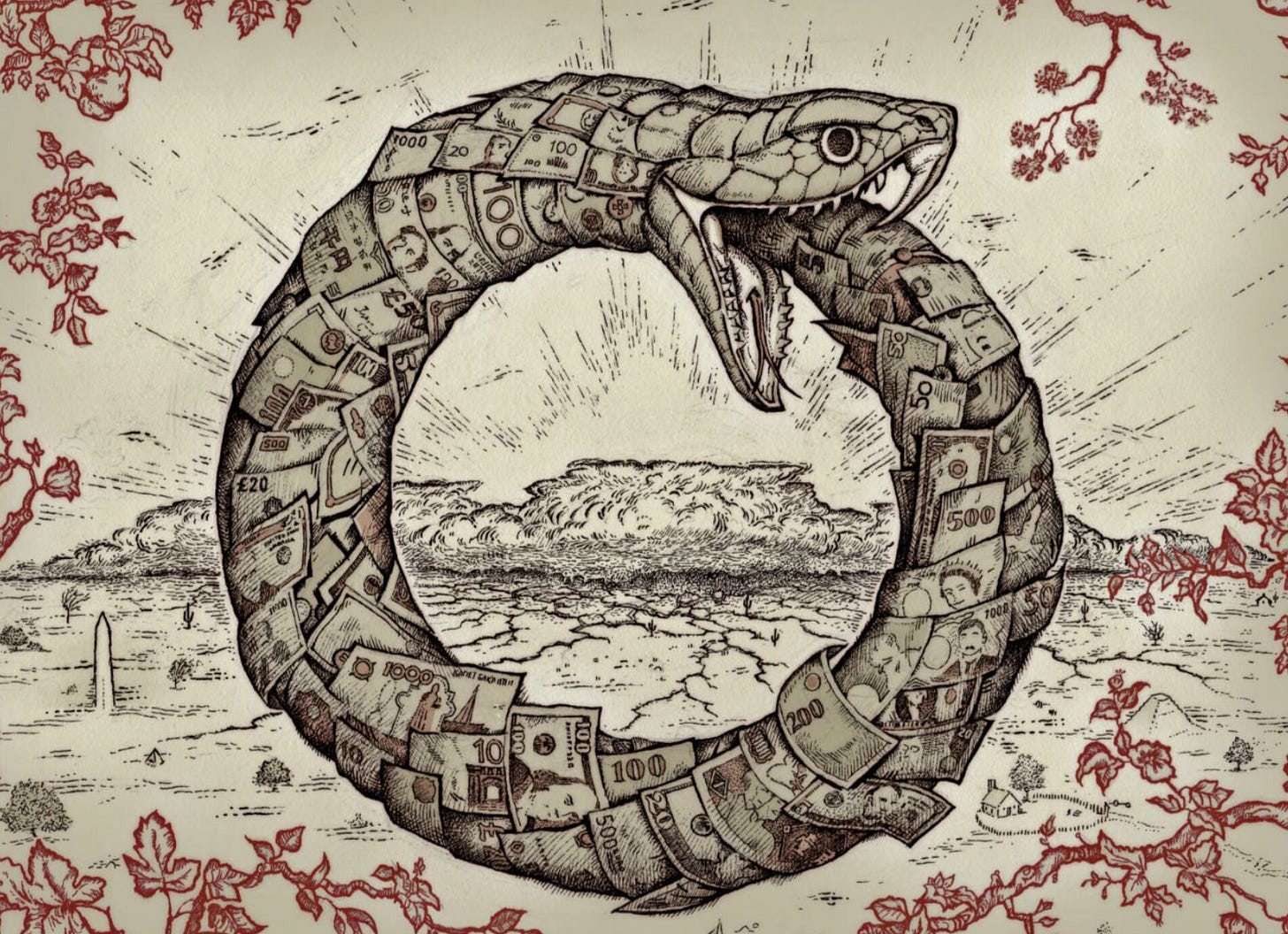
There are two fundamental ways to look at the world, and indeed at Life itself. In the simplest terms (of psychiatrist Iain McGilchrist), our left brain hemisphere is inclined to view it as a straight line, whereas our right hemisphere prefers to invoke the image of a circle.1 Both metaphors have merit on their own terms, but as the Line came to eclipse the Circle over the past few centuries, an important insight was lost. The world, Life, is inherently ambiguous, full of contradictions, interrelated opposites and paradoxes. And whereas the Circle, being but a line bent into itself, readily admits this, the Line allows no other shapes besides it – anyone questioning the supremacy (or even the shape) of the Line is espousing heresy.
Until this very day, most people are convinced that Evolution is a linear process towards “Man” as its final product, the pinnacle of perfection, shaped in the image of God himself. Furthermore, human history itself is believed to be a linear process as well – a straight Line, from the primordial mud right into the heavens, rising along an axis named “Progress.” Most people today are sure that all that came before us must have been vastly inferior, dirty and repulsive, just like historically everyone outside the dominant culture was thought to be inferior as well – throughout the ages, the further away from the centers of civilization you lived, the “less human” you were to those at the core. Remnant populations of foragers who survived the steady onslaught of the ever-expanding, war-waging agricultural societies were – until very recently – dismissed as mere savages, closer to animals than to actual human beings. For countless centuries we remained ignorant.
A while later, once it became undeniable that the people living on the outskirts of the empires were not all that different from their conquerors (in all but cultural terms), they were still denied full standing. First, indigenous people were heaped into the lower ranks of earlier, imperfect versions of humans, child-like relics of our past, and not as sophisticated as the “Great White Race”; later they were regarded as mere curiosities, either villainized or romanticized, while the System worked relentlessly to sweep them under the rug of history – any even remotely decent alternative to the predominant way of life might give people wrong ideas!
Moreover, history, Evolution itself, was thought to be a race towards total domination. The people of the dominant culture have lived according to this paradigm until this very day, and we’ve almost reached the point at which this prophecy was fulfilled – Humanity, the (self-proclaimed) Chosen Ones, almost reached truly divine status. As the wheel of history turned, the very building blocks of Life itself were sliced up, pulled apart and reassembled, to create mutant slaves that better served their new overlords. It was even attempted to replicate and domesticate the very star that powers Life, to harness its energy, and hence to increase human control and domination over Life until it reached totality. We almost made it to the next planets, almost seeded the universe with our kind, and almost left behind the constraints of the material world.
Almost.
But no amount of denial and wishful thinking could stop the inevitable cycle of growth and decay, and just when this culture was at its most confident, it bumped into the first limits and crossed the first thresholds. Simultaneously, one after the other, our inventions turned against us.
As we waged war on the world with increasing fervor, we soon found that we fell victim to this great conflict ourselves. The Machine we built spewed out poison, and that poison fell back at us from the sky until the whole world was awash in it, ourselves included. At the same time, it converted the living world into dead matter – goods and products to be consumed and discarded, money to be hoarded or spent – until Death started closing in on ourselves as well. The very endeavor we thought would elevate us to the stars, to our rightful place among the gods, turned out to be one of creeping self-elimination: a dead end.
At present, it seems we won’t get any closer (now that we’re past Peak Everything), and the “arch of history” bends downwards, towards its starting point.
In a way, the Line starts to look more and more like a Circle. A Circle that, upon closer inspection, appears almost closed.
And isn’t it ironic? Just as the doomsday clock is about to strike midnight we start to finally gain a true understanding of our precarious position, and thus also finally develop the ability to respond adequately: to mitigate & adapt wherever we still can. We have gained sufficient understanding about ourselves – where we come from, what we do, why we do it, how all that fits into the greater scheme of things, and what our place in this world is (as well as how the world works) – and the bigger picture that’s slowly emerging is sobering: connecting all those dots is leading more and more of us to the conclusion that, ultimately, it was all in vain.
All things considered, we’d be better off if we never started our ascend.
Most certainly, the world itself would be better off.
Even more ironically, as the Circle slowly comes to a close, we’ve found that the answers to all those existential questions were simpler than any of this culture’s “greatest thinkers” could have imagined. If they – instead of belittling and vilifying them – would have listened to the many indigenous cultures who miraculously managed to inhabit their environment from time immemorial without destroying it, we could have spared ourselves (and our fellow living beings) a lot of suffering. And this shouldn’t come as a surprise: you might actually learn a thing or two about Life itself if you live in intimate relationship with each other and the landscape you’re part of for a few hundred thousand years.
Crucially, those cultures indisputably show that civilization’s continuous cycle of growth, overshoot & collapse doesn’t have to be the default for our species.
But, just as the Line demands absolute ascendancy, Science won’t concede to other ontologies and epistemologies – especially not those of uncultured, illiterate jungle-dwellers who worship trees and animals.
Modern science was founded by brutal men who intended to sweep away the gentler conceptions of Nature embraced by earlier mystics, magi and alchemists. Its goal was to do the exact opposite of ancestral, land-based cultures who see themselves as an inherent part of Nature. Instead of trying to develop a mutually beneficial relationship, the aim of science was, in the words of Francis Bacon, to “stretch the deplorably narrow limits of man’s dominion over the universe to their promised bounds.” Increasingly, Nature came to be seen as our servant, an “other” to be conquered and subdued for our own benefit.
Soon after, Science & Technology became invaluable tools needed to fulfill our divinely appointed destiny, mechanical helpers that would carry us into the dawn of a new age, the Machine Age, in which humans moved further away from Nature than ever before.
How ironic is it, then, that after centuries of constructing ever more elaborate machine metaphors for Nature and all her constituents, it now seems more and more obvious that Nature is not, in fact, anything like a machine, but instead resembles a living organism, akin to our own animal bodies and all the other living beings that comprise her. Exactly what people used to think, way back at the onset of the loop we’re riding!
After millennia of treating fellow living beings, both animals and plants, and in fact the entire world as slaves and inanimate resource pools to exploit at will, we now finally wake up to the reality that our distant ancestors knew all along: we all have more in common than the dominant culture ever cared to admit, and instead of some made-up hierarchy (a lá “scala naturae”) with us humans at the top, things like consciousness and intelligence seem to be far more common than earlier scientists ever dared to assume. Moreover, it’s not like we humans are “superior” even in those regards, as much as we are unique – to the same extend that other living beings have their own strengths & advantages that make them unique. We are all conscious, we all have dreams, hopes, ambitions, fears & worries, we all feel the same basic emotions, albeit to different extents, and with different priorities and preferences. Those are not human universals, they are inherent to Life (and perhaps beyond).
The more we’ve learned about the other living beings that we share this world with, the more we realized how similar we all are. Both in purely genetic terms (as we all share common ancestors), but also in regards to the aspects that we previously thought separated us from “the animals” and made us human: cooperation, communal parenting, tool use, language, culture, even ritual.2
Subsequently, we’ve found that each time modern science has (at times grudgingly) validated indigenous wisdom, we’ve moved a step further towards to the beginning of the Circle.
Yet the very conception of what we call Science (in the modern sense) was based on the ultimate abstraction and separation: the assumption that things existed in isolation, that a tree is a tree, a horse a horse, and a human a human, and that each exists by itself and for itself.3 We’ve since separated ourselves further and further from the rest of the world, isolated ourselves along the way, and became convinced that we don’t even belong into the natural realm. So we started constructing our very own (entirely artificial) niche, and this tendency reached its climax in the present age, where most humans live in environments entirely shaped by human hand. “The world” to them means “the human world” – everything else is, at best, just a backdrop.
There are now millions of children who have never touched the soil, seen the stars, or observed wild animals. People who never spent a single day without electricity, who never planted a seed, never climbed a mountain, and who never left the prison of our own making.
Think about that for a moment.
The slowly closing Circle I’m talking about is the inevitable trajectory of a culture infected with a dangerous and highly infectious mind-virus (called Wetiko by some Native cultures), that moves further and further away from its baseline, despite eternally having to fight gravity’s pull. A culture that consumes and consumes until it starts cannibalizing itself, and that desperately wants to perceive a vast gulf between itself and all other living beings in order to justify its ravages and feel good about itself.
Admittedly, it’s not a perfectly round circle, but more of a snail shell, drawing a wider and wider curve until it abruptly stops circling and collapses back to its starting point. If we feel fancy, we can add a third dimension, where the linear axis along the shell’s spine represents time, and the widening circles the shell draws around this axis represents the scale & complexity of the dominant culture. Just when it reaches the maximum distance from the baseline, the point that’s furthest away from our evolutionary starting point, it rapidly deteriorates and consequently reorients itself according to its initial point of origin.
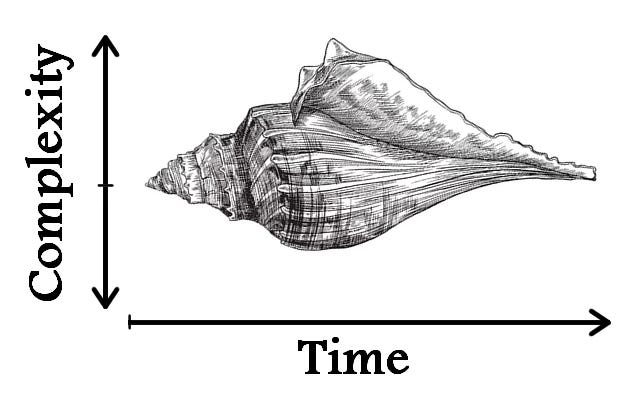
After countless more or less bearded philosophers have racked their brains over the stereotypical question of “what is the meaning of life” and filled innumerable tomes with their musings, it seems that the answer is so simple as to be self-evident for all natural, land-based human cultures: the purpose is to just live.4
“Philosophical entertainer” Alan Watts formulated what indigenous people knew all along:
“The meaning of life is just to be alive. It is so plain and so obvious and so simple. And yet, everybody rushes around in a great panic as if it were necessary to achieve something beyond themselves.”
It was right there, all along.
Right here.
For a long time, the people of this culture simply forgot that there was anything that came before written records – one of the main reasons why history was long thought to resemble a Line is because the largest part of the Circle vanished into oblivion as the emergence of the first civilizations marked the beginning of a new era, eclipsing the old. Daniel Quinn coined the term “The Great Forgetting” to give a name to this phenomenon.5 All earlier civilizations perceived humans as being superior to, and thus to some extent separate from all other life forms, a schism initially created by the cultural implications of “totalitarian agriculture”: the forcible conversion of diverse ecosystems into monocultures to fuel our own growth (at the expense of all other living beings).6 We became convinced that humans matter most, and that our role is to manage, appropriate, control and dominate the world – almost like gods. And indeed, we were somehow different from all other animals – at the very least, we were vastly more confused about ourselves, and paradoxically became both more insecure and more arrogant as a result.
We also became the first animal to actively seek the destruction of the very same biosphere that nurtures us.
We’ve been building cities and practicing agriculture for so long that this culture’s “greatest minds” – and the authors of all our history books – believed that those things come as natural to humans as does dam-building to beavers and acorn-burying for squirrels. Not only that, but we were also thought to be inherently sinful and destructive. It’s in our Nature to do all those things, we were told, it’s just who we are. Not animals, but somewhere in between the earthly realm and heavens itself. Through some cosmic mishap (or deliberation, depending on the interpretation), we were bestowed with God-like powers, but unfortunately without the divine wisdom needed to wield them responsibly.
Every important thinker and philosopher revered by this culture was a victim of this Great Forgetting, and thought about humans as existing separate from the rest of Nature, or at the very least unrestrained by many of her laws. For ages, nobody thought we could learn anything from the time before civilization (if they even admitted that there was a time before civilization).
But we forgot something even more essential: we suddenly became very unsure of how we should live. Every fraction of society seemed to have their own ideas, and not infrequently they were utterly incompatible with one another. Whereas all other living beings know perfectly well how to live, we pitiful humans seem to have forgotten this simplest of arts. Especially in the post-materialist world of constant economic overproduction following WWII, the question of how we ought to live became a constant source of quarreling.
Consequently, we have come up with increasingly strange & evolutionarily novel ways of living and subsisting: we now spent most of our lives in little boxes, whether our apartment, car, office, or the stores we need to visit, in which each variable (light, temperature, airflow, predominant color, etc.) is controlled by us; we regularly consume poisonous foods so sterile and lifeless that they resist decay, and we’ve even tweaked their constituents to make them maximally addictive.
To top things off, we now find ourselves working ever longer and harder just to afford and maintain our growing collection of treasured time-saving machines.
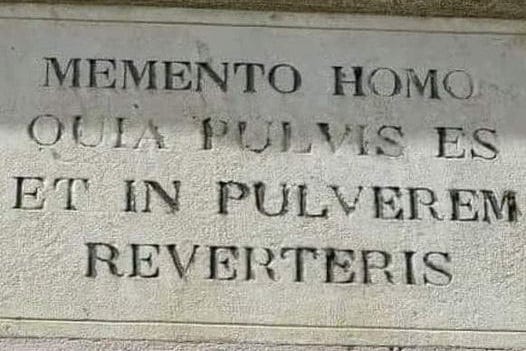
The underlying culprit for our increased alienation was (and still is) anthropocentrism: human exceptionalism, human supremacism, humanism – call it what you want. It’s at the root of all the evils that befall us, because it ignores the most important thing about us, ourselves being embedded in a larger community of living beings and non-living entities and phenomena on which we absolutely rely for our survival. It ignores that we’re part of a Greater Whole, and that we’d better act accordingly.
The hubris stemming from this initial misconception cumulated in the common contemporary vision of humanity literally merging with our most advanced tools and becoming interplanetary – following the path of a Line, not a Circle.
The Circle tends to be aware of its previous trajectory and thus its inevitable endpoint, whereas the Line keeps its gaze straight ahead, as it blindly pushes forward into the unknown.
It is deeply ironic. The very technologies that were supposed to make our lives better, to “save” us from drudgery and suffering, are now the biggest threat to our survival – after almost a century of “better living through chemistry,” the world is awash in its toxic components and byproducts. Micro- and nanoplastics are now ubiquitous, even in the remotest corners of the planet – an existential threat that, until very recently, went completely unnoticed. Antibiotics have led to the rise of antibiotic-resistant germs, and it seems like for every viral or bacterial disease eradicated, a new non-communicable disease emerged. While trying to imitate Nature’s ingenuity, we’ve created toxins so potent they will harm living beings for centuries to come.7
We have “learned how to fly,” yes, but in contrast to birds and insects we use up non-renewable resources and spew out pollution when doing so. Same goes for every other invention humans pride themselves on because some technology has allowed us to become “better” than other animals. Our abilities and powers have grown manifold, but can they really be called better if the system that enables such technologies is destroying the world – and ourselves in the process?
Yet at the same time, in the same places where people devised new machines to more effectively destroy their environment, others made discoveries of a different kind.
We are actually much older, they found, and we’ve been just as intelligent as we are now for a considerable time. While people previously thought that nothing much happened in the “Stone Age” – a belief spurred by early archaeologists’ obsession with the monumental buildings of the first civilizations – we now start to understand that paleolithic people held the most important invention of all, the long-forgotten wisdom we humans seemed to lack for so long:
How to live decent lives within the limits of one’s ecosystem, without degrading it in the long term and thus without compromising future generations’ ability to do the same.
The first explorers and anthropologists who met indigenous cultures at eye-level were also the first members of our culture to transcend the Great Forgetting, and herald in the Great Remembering.
After all these millennia of blissful ignorance, we’re now finally so close to the end of the Circle that we can see its starting point in the distance.
Still, so-called “experts” continue to tell us (like they did for decades already) that we have to use ever more complex & expensive industrial products just so that we’ll be able to sleep, walk, parent, cook, run, or sit correctly. Ever more sophisticated chairs are invented in a desperate bid to stem the rising tide of back pain and other posture-related issues, without appreciating the simple evolutionary reality that our human bodies were never made to sit for eight hours a day.8
The slowly closing loop has become noticeable all throughout society. After inventing high-tech sneakers padded with the most potent greenhouse gas one Earth,9 shoes that promised us to “tread on clouds,” the final trend before this civilization’s collapse seems to be “barefoot shoes” that imitate not wearing shoes at all. Ironic, indeed.
Now we know: the people with the healthiest feet, without deformations that require expensive insoles for even more expensive shoes, all go barefoot. The people who don’t need an artificial hip bone at age 50 are the ones that don’t wear shoes at all. And that shouldn’t surprise us: our feet were shoeless since the beginning. You can’t improve upon millions of years of evolution in a mere century – if ever!
On a similar note, we’ve been told that we “need” mattresses that are a handspan thick, just to be able to sleep comfortably. Ever more complex chemical blends and materials are created in a bid to let us sleep “as on a cloud.” But the more comfortable (and thus deep) we sleep, the less we move, so our bodies don’t have the opportunity to go through the natural subconscious stretching routine (as we roll from side to side during the sleep cycles), and we wake up sore more often than we would if our mattresses were a whole lot thinner. Even worse, soft mattresses cause our spine to sag, creating posture problems and back pain as unintended consequences.10
But… Comfort!

For a long time, the people of this culture thought that humans are just a very weak species, and we were never intended to live very long. Confusing average life expectancy with the modal age at death,11 people believed that we used to “die in our thirties” – a platitude that is being repeated until this very day, even among “educated” folk.
Nature was out to destroy us before we reached old age, it seemed, although – as we’re slowly starting to realize – the bulk of our historical misery was actually of our own making. At the last minute, new discoveries show that we are only so miserable because we don’t live the lifestyle we were prepared for by the last few million years of evolution. The Great Remembering unearthed the fact that settled, agricultural societies are much more prone to famine, epidemic disease, warfare, slavery and conquest than (semi-)nomadic foragers.
Whereas people have tried for centuries to increase health and prolong life through an ever-greater array of technological wonders, we are waking up to the realization that the prerequisites for good health (both mental & physical) are surprisingly simple: a good & balanced diet of organic food, plenty of physical exercise, intimate relationships & strong communities, meaningful & diverse work, embeddedness in a healthy environment, and ample time spent in places not shaped by human hands.
Pretty much exactly like the lives of those “backwards” indigenous societies the dominant culture has so busily tried to hide from our sight and sought to exterminate.
So after treating the living land like a strip mine for half a century, we now finally realize that all our presumed “progress” is a cul-de-sac, and all we did was slowly digging our own grave. For each new “good” this society produces, the biosphere suffers more. If you want to make a tool handle, you have to cut a branch. If you want to build a house, you have to cut a tree (or two). All still within the limit of what Nature can regenerate.
But if you want to build a car, a smartphone or a skyscraper, you will have to move tons of ore, use gallons of highly toxic chemicals to leach out the desired metals or minerals, utilize a vast global network of infrastructure, and burn millions of barrels of oil to power all those processes. Modern technology always comes with a hefty environmental price tag, and for precisely this reason it can never be “sustainable.”
As I’m fond of saying: the only truly sustainable form of energy comes in calories.
But, of course, it all depends on how you obtain those calories as well. We now know that artificial fertilizers deplete soil nutrients and destroy the soil food web, the foundation of all terrestrial life. Pesticides bioaccumulate in the food chain and drive insects (and other animals) into extinction by the thousands. Even plowing causes catastrophic soil erosion in the long term.12 The only thing left to do now is to complete the Circle: to throw overboard decades of “agricultural science” and do the exact opposite, follow Nature’s way, and re-create topsoil through regenerative practices that imitate natural processes (such as assisted reforestation/rewilding, permaculture, agroecology, and rotational grazing). After waging an all-out war on the soil and its inhabitants, we now see that only reconciliation and reconnection can save us. How fucking ironic that we had to destroy the bulk of all arable land just to arrive at this (objectively pretty self-evident) conclusion.
At the same time, the unusually stable climate that marked the beginning of our long loop now officially lays behind us. The conditions that allowed agriculture, sedentarism and large-scale societies are rapidly coming to an end.
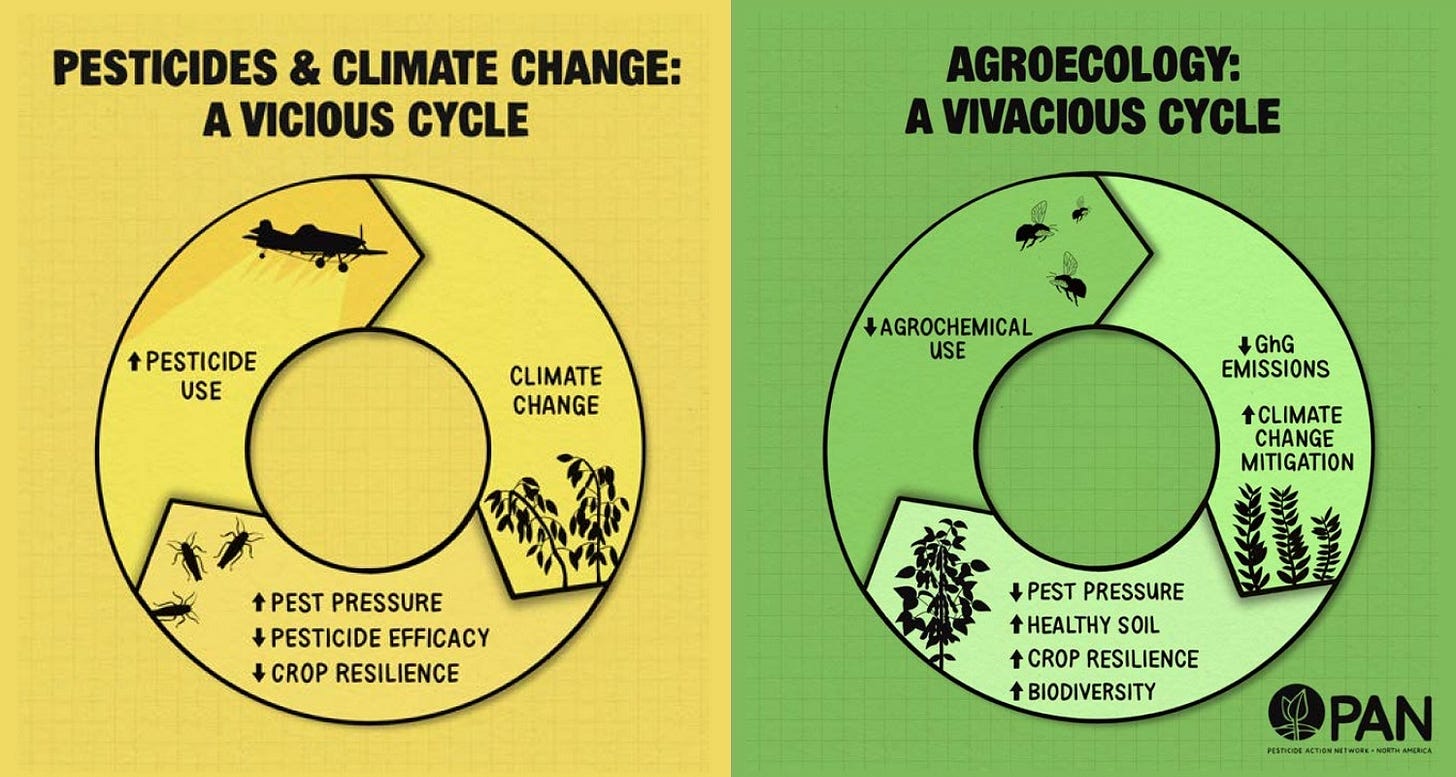
The Circle is nearing its end point, which – as we have seen – is in many respects also its starting point. The knowledge required to survive the coming (self-inflicted) cataclysm was recovered just in time, but it cost us our one and probably only shot at living in a relatively stable world, with a stable climate that allows sedentary human cultures that cultivate most of their own food.
But maybe it was our fate. Maybe we needed to learn this particular lesson the hard way. And while I’m not a fan of this argument (because it assumes that the entire world is merely a playground for humans – and assuming that everything suffers and dies just so we can learn a lesson seems a tiny bit self-centered), I do see its merits.
We weren’t ready yet, because we didn’t learn the lesson that the current age teaches us – but that hunter-gatherers never forgot: hierarchies must be kept as flat as possible, by violent means if necessary. Hierarchy enables increased social and technological complexity (and vice versa), setting into motion a positive feedback loop – and now we all know where that leads eventually.
Moreover, if we fail to curb the rise of authoritarians, we’ll find ourselves in a world where a handful of people own everything and everyone else fights each other over the scraps. Evolution has put us on a path towards egalitarianism and cooperation (from our more hierarchical, patriarchal & competitive chimp-like ancestors), and the pendulum has only swung back for the past few millennia – a blip in our species’ 300,000-year-long history. The overall trend of our evolutionary path is finally clear, and now it is up to us to work towards its continuance.
Again, the irony is palpable: right at the time when technology has reached the point at which it is destroying the entire biosphere, the same technologies that enabled our rise to global dominance also allowed us to gather data, share insights, connect the dots and put our distant ancestors – and hence the ecological niche and evolutionary context we evolved in – into a radically new perspective. As the empire around us descended into dystopia, we learned that the societies of our forebears were actually deliberately fashioned in a way to avoid exactly the kind of catastrophe unfolding in front of us. The Lisu, a traditional culture inhabiting the mountains of Southeast Asia, killed overly ambitious village headmen in their sleep to avoid the kind of misery and enslavement that categorizes contemporary society, and foraging societies all over the world have similar (and often less violent) leveling mechanisms employed to curb and control our darker tendencies & impulses.
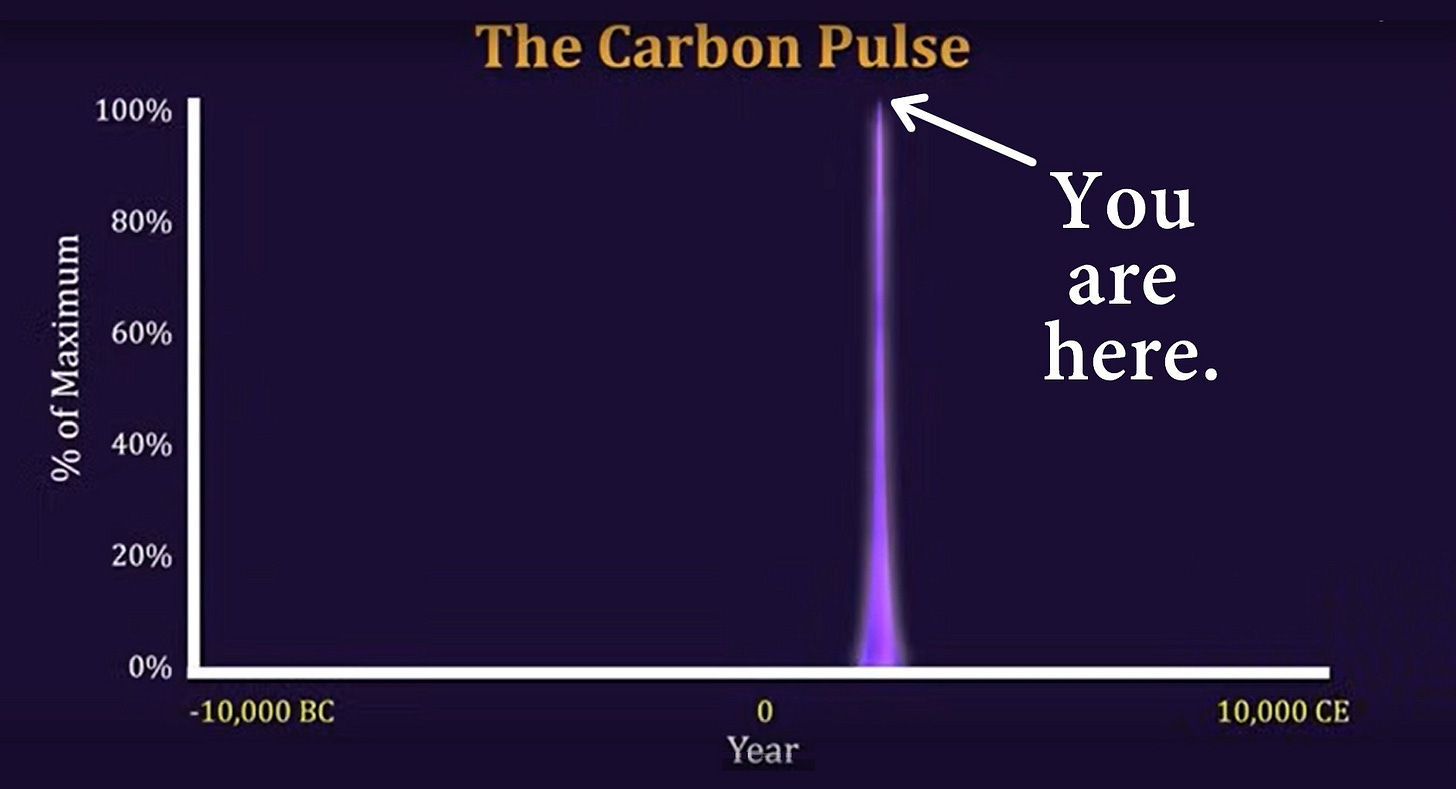
Just as we pass the peak of the “Carbon Pulse,” the highest point in the dominant culture’s trajectory, we slowly become aware of where exactly we are. What’s in front of us now is not a continuously ascending Line leading into paradise, as the Myth of Progress led us to believe, but a gaping void. The higher you climb, the farther you fall.
Currently, we are painfully reminded of our frailty, our mortality. We’re being put into our place, humbled and frightened by the mythological forces we’ve unleashed – often in a bid to tame them. We’ve tamed the fire, and now it throws itself back at us with all its might. We’ve tamed the lightning bolt, domesticated it and trapped it in the little metal boxes we keep in our homes and carry around with us at all times, and it now seeks to grind us down with countless little bursts of excitement & pleasure, wearing down our nerves and gnawing at our sanity.
The very devices, networks and online platforms that were meant to connect us like never before have instead created a society characterized by the most profound isolation and loneliness we’ve ever experienced as a species. As a result of intensifying alienation, a growing number of people view their gadgets with increasing suspicion and actively limit their exposure to such technologies – another move towards closing the loop.
Real community and real connection are only found in the real world.
But, at the same time – again, deeply ironically – those same technologies enabled the final turn of the Circle: just in time a synthesis is emerging, connecting unorthodox and holistic thinkers from all sorts of different fields with brilliant minds outside of academia, adventurous misfits, free spirits, countercultural creatives, radical iconoclasts and “fringe weirdos” like myself. A small but growing number of people realize what’s happening and tries to figure out what to do about it.
And you, dear reader, are one of them.13
This synthesis will (unfortunately) never become mainstream, an insight that is part of the synthesis itself. In conceptual (and consequently behavioral) terms, we humans are very different from one another, and those differences have been amplified and turbocharged by the social & technological trends of the past few decades. The already broad spectrum of worldviews and ideas is now wider than ever before, and the unfortunate reality is that the majority of them are self-eliminating. There will probably never be a “Great Awakening,” and large numbers of people might choose to “go down with the ship” instead of changing their ways. Their loss.
Many more will simply be deprived of their right to know and/or choose by economic inequalities (such as wage slavery, debt bondage and the massive educational gap between classes). This is profoundly tragic and deeply unfair, yes, but unfortunately also largely inevitable. There is nothing anyone can do to avert the consequences of overshoot.14
Not all is lost, though – while there are certainly no solutions to our predicament, there definitely are responses, namely a vast array of regenerative/restorative practices (some of which I briefly mentioned above). Those of us who are a) open to change & novelty, b) fairly tolerant of uncertainty, and c) lucky enough to have the opportunity to experiment with them should start doing so now, and it is subsequently both our moral responsibility and in our own best interest to do whatever we can to allow less fortunate people to follow in our footsteps as soon as possible. Scarcity & collapse gearing up will put a cap on what our adversaries can do, and hopefully soon enough our path will look more attractive than what the System will still be able to muster. Certain things might even get a little easier as the System is stretched thinner and thinner and its range of influence shrinks,15 and we could definitely use the extra hands in the future.
Some of us (myself included) have already started to actively move closer towards the starting point of the Circle. We are wayfinders, Bioneers and Matriots, exploring possible pathways, creating nodes of biodiversity and local resilience, and preparing as good as we can for the monumental task ahead.
True to the motto, collapse now and beat the rush!
Not long from now, our descendants will find themselves living lives that are much closer to the starting point of the Circle than anything in between.
Right after we outsourced our much-cherished intellect & memory to our gadgets and built thinking machines that became so good at imitating us that they reliably reproduced our own failures and shortcomings, the capacity to effectively use our oversized brains will once again become an important marker of survival.
After creating abstract representations of real value – money – and consequently adding ever more complex layers of abstraction (and losing sight of what’s actually valuable in the process), we will find out that what really matters in life cannot be measured in monetary terms.
And after climbing the highest peaks and diving to the bottom of the deepest trenches of the oceans, after exploring every corner of the planet, however remote and desolate, after sending probes to distant planets and the beyond the edge of our own solar system, we will soon find ourselves back where we started: in a world that rarely extends beyond the horizon.
The coming age will, in many important respects,16 more closely resemble the Pleistocene than the Holocene.17 One thing that’s for sure is that large-scale societies, anthropocentric subsistence modes and authoritarian social organizations will disappear.
If food cultivation becomes increasingly difficult due to unpredictable climatic conditions, we might soon be better off foraging & wildtending for subsistence. This shift will naturally eliminate the basis for both mass society and dominance hierarchy.
As we now know, paleolithic hunter-gatherer societies tended towards the egalitarian end of the spectrum because surplus accumulation was prohibited by nomadism (you can only own as much as you can carry) and the even distribution of skills (if everyone possesses the basic skills for survival, you can’t be denied access to subsistence and don’t rely on any individual’s benevolence to fulfill your basic needs). Furthermore, crucial resources (such as animal herds, nuts, water, flint, etc.) were widely dispersed over the landscape (i.e. decentralized), and thus virtually impossible to monopolize.
As a nomadic forager, survival is much easier if you work together as a coherent group, instead of competing with each other as a few scattered self-interested individuals. It is much better to make decisions together (through consensus and similar processes that values experience and different perspectives), than to rely on any one fallible person to lead everyone else at all times.
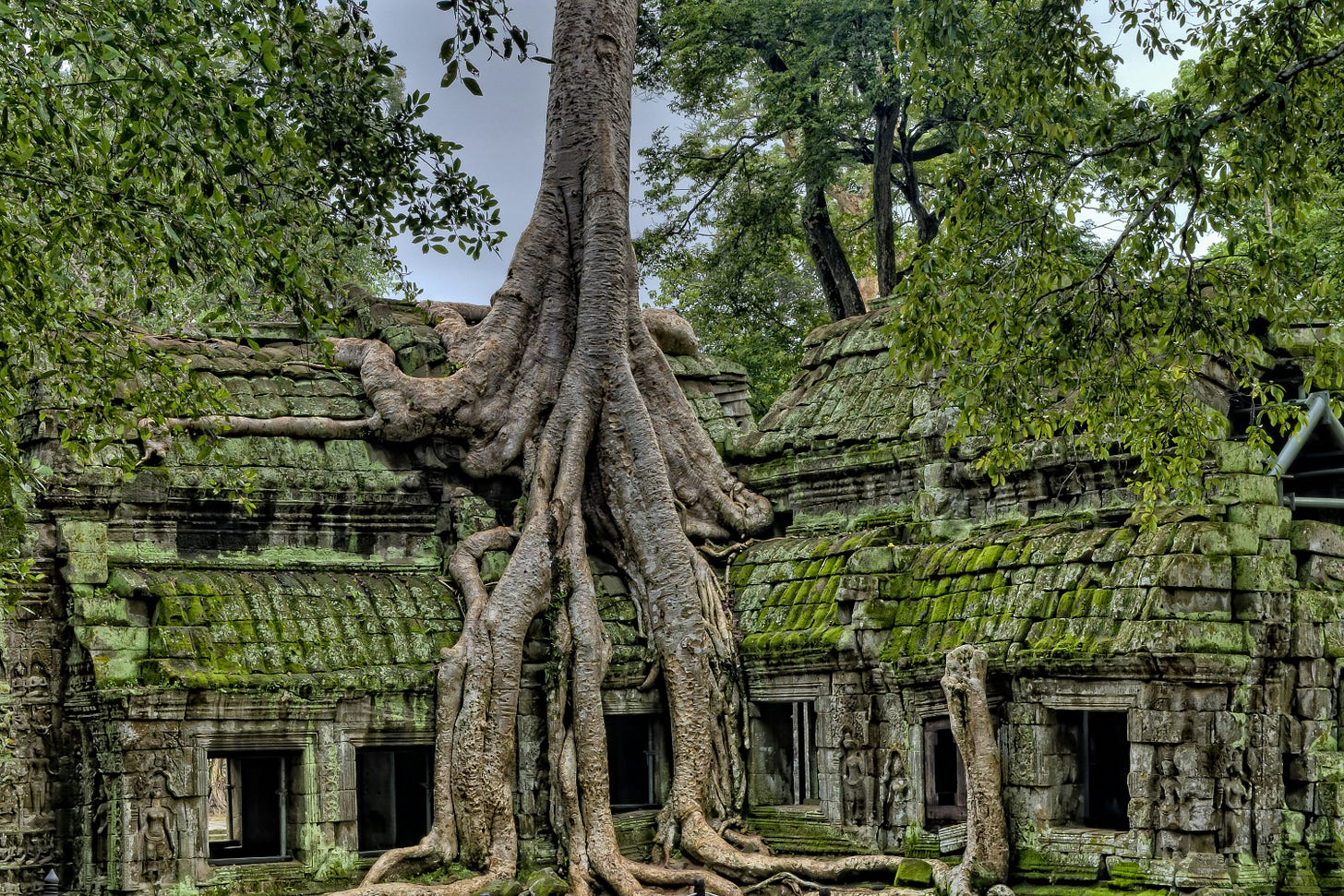
The Circle will be finally completed when we, once again, roam the landscape in small bands of closely connected kin, foraging for subsistence, and worshipping trees, mountains, the rain, and the plants & animals that give their life for our life’s continuance. Once the monuments attesting to the dominant culture’s splendor start crumbling, and the last remnants of its hubris slowly get buried underneath sand, water, or vegetation.
In the end, all that’s left to acknowledge is that while there are few Lines in Nature, Circles are ubiquitous. Trees and grasses, upon closer inspection, rarely grow fully straight. Even the horizon, the closest there is to a straight line, is in fact just a small part of a Circle.
Black Elk, indigenous elder and Medicine Man of the Oglala Lakota, commented on the importance of Circles to Native American life (and their ubiquity in Nature):
“You have noticed that everything an Indian does is in a circle, and that is because the Power of the World always works in circles, and everything tries to be round. […]
The sky is round, and I have heard that the earth is round like a ball, and so are all the stars. The wind, in its greatest power, whirls. Birds make their nests in circles, for theirs is the same religion as ours. The sun comes forth and goes down again in a circle. The moon does the same, and both are round. Even the seasons form a great circle in their changing, and always come back again to where they were. The life of a man is a circle from childhood to childhood, and so it is in everything where power moves. Our tepees were round like the nests of birds, and these were always set in a circle, the nation’s hoop, a nest of many nests, where the Great Spirit meant for us to hatch our children.”
Only now that the Circle closes do we finally become aware of its beauty, its wholeness, and its perfection. Only now do we have the chance to apply what we’ve learned from past mistakes, and try to once again create functioning human cultures based on this understanding: circular societies that are more in tune with our evolved inner human Nature, snugly nestled into the broader ecological communities we are part of.
Henceforth, it is up to us to bridge the remaining gap, to tie together the ends of the loop, in the most constructive, equitable, life-affirming, creative, and beautiful way possible.
And now, let us create Circles
within Circles,
within Circles,
within Circles,
within Circles,
within Circles…
If you liked this essay, you might also enjoy one of my previous semi-mythical takes on the human journey:
I write stuff like the above in my free time, when I’m not tending the piece of land we’re rewilding here at Feun Foo. As a subsistence farmer by profession I don’t have a regular income, so if you have a few bucks to spare please consider supporting my work with a small donation:
If you want to support our project on a regular basis, you can become a Patron for as little as $1 per month - cheaper than a paid subscription!
I am aware that the hemisphere hypothesis was (rightly) scrutinized after a bout of pop-cultural misinterpretations, but if you think there’s nothing to it, I urge you to read just the introduction of McGilchrist’s book ‘The Master and His Emissary: The Divided Brain and the Making of the Western World’ (Yale University Press, 2009).
One of the most fascinating instances of non-human rituals are “stone shrines,” piles of rocks that several chimpanzee societies in West Africa accumulate at the base of certain trees.
Here I’m referring to the (seemingly paradoxical) Daoist claim that “the horse is not a horse,” which I’ve written about previously. As a short recap, one might point out that the horse is also the grass, the river and the wind, since without grass to eat, water to drink and air to breathe, there would be no horse. The horse is made of those things, and although it might look like a horse to us, it is still also all those things because it couldn’t exist without them. The borders of where the horse begins and ends are thus not entirely clear.
Maybe you’ve seen the quote by Melanie Lau that was widely circulated online:
“Western cultures believe we must be alive for a purpose: to work, to make money. Some indigenous cultures believe we’re alive just as Nature is alive: to be here, to be beautiful & strange. We don’t need to achieve anything to be valid in our humanness.”
This concept should be part of the global curriculum, since it explains why humanity was (and is) so confused about its place in the greater scheme of things.
Arnold Schroder has recently pointed out that comparisons between the dominant culture and cancer are valid – cancers start as perfectly normal cells, that nonetheless at one point decide that they’re not a part of the whole anymore (i.e. perceive themselves as separate from the whole), and thus begin acting only out of self-interest and with disregard to the organism at large that houses them. The parallels are most obvious. The dominant culture has, quite literally, become the cancer spreading over the world.
Plants like Lotus and Taro coat their leaves in water-repelling compounds, and in an attempt to re-create those compounds (among others) by human hand, scientists have created some of the most dangerous pollutants we’ve ever known, adequately nicknamed “forever chemicals.”
Neither were we made to drive vehicles, pack boxes, operate levers, hew rocks, saw lumber, or grind grains all day long. We weren’t made to do anything for eight hours straight, except sleeping.
Nike used sulphur hexafluoride (SF₆) – over 22,000 times as potent as carbon dioxide – in their “Air” series. It took them over 14 years (!!!) to replace it with – *drum roll* – nitrogen.
The (scientific) jury is still out on the exact details here, but it seems instinctively nonsensical to assume that we need soft mattresses when we did just fine without them for 99 percent of our species’ existence.
The average life expectancy is distorted by infant mortality and says very little about how old people tend to get. The more informative “modal age at death” (the most common age at which people in a population die), more accurately represents the evolutionary expectations for our species. The modal age at death for various hunter-gatherer populations fall into the seventh decade (71-78 years of age). [Source: Longevity Among Hunter- Gatherers: A Cross-Cultural Examination; Gurven & Kaplan (2007)]
Soil erosion (caused by basic agricultural practices still practiced today) contributed to the collapse of many earlier civilizations (as laid out in the 2007 book ‘Dirt - The Erosion of Civilizations’ by David Montgomery).
If you’ve made it this far, I’m quite confident in making this claim.
Remember that – statistically speaking – over half of the global population basically subsist on fossil fuels (in the form of artificial fertilizers, farm equipment and food infrastructure, which all depend on cheap & abundant fossil fuels). We’re past the peak, and we can’t magically increase the amount of fossil fuels – we’re not gods. What we can do is prepare our communities for disruptions and collapse, and initially plan in extra capacity for less fortunate refugees.
Such as squatting and liberating land, creating networks of mutual aid, and slowly taking over crucial services currently provided by the System (such as localized food production, basic education & healthcare, community governance, etc). Less control, bureaucratic red tape and social stigma regarding alternate ways of living might also prove beneficial. (Also, I pray for a financial collapse that wipes out debt!)
Such as climatic variability, scale of human societies (and their overall environmental impact), and perhaps even overall human population.
Barring a full-blown planetary catastrophe (like nuclear war, runaway acidification of the oceans, a rapid release of the arctic “methane bomb,” etc), and with a few crucial differences (such as massively reduced wildlife populations, ravaged ecosystems, disrupted natural cycles, exorbitant pollution levels, etc). But we also shouldn’t underestimate our Great Mother’s ability to heal herself.







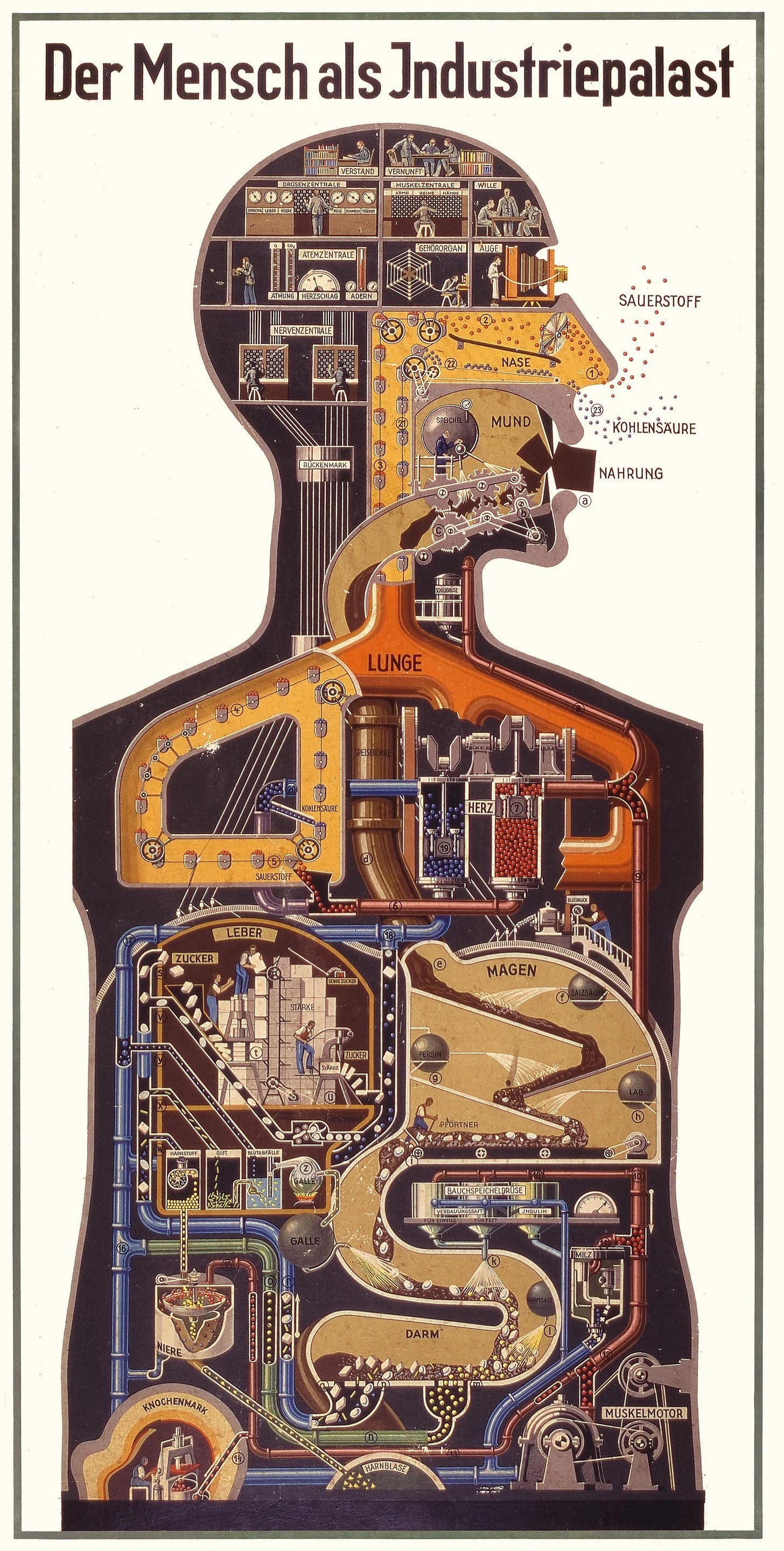

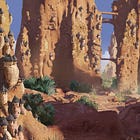
Jonathan Rowson speculated on what a shift in the "ways to look at the world" might mean: "The question about the politics of Iain's work comes up in different forms. One way I think is helpful to think about it is that it's not so much political as metapolitical. It's about looking inside "what politics is" and recasting "what politics should be about". Clearly there's a relationship between the left hemisphere and power, for example, and clearly there's a sort of vision of the world presented by the right hemisphere. When you look through those lenses the whole idea of the political spectrum should dissolve. A new set of priorities should come into being. If the cosmos is as Iain describes it, "politics as we know it" changes fundamentally. So it's not as though the thesis says "therefore vote this way or that way", or prioritizes economic growth or something else, it's more that it recasts the very idea of "what political practice should look like" because it reprioritizes the sacred, education, imagination, and so forth. And through that a different kind of politics should arise." https://youtu.be/CWSctIuLdUY?t=6862
Very happy to have found a like-mind in you, friend. Well said.